The 10 Steps of Glycolysis Diagram | Quizlet
1/12
There's no tags or description
Looks like no tags are added yet.
Name | Mastery | Learn | Test | Matching | Spaced |
|---|
No study sessions yet.
13 Terms
Step 1
A phosphate group is transferred from ATP to glucose, making glucose-6-phosphate. Glucose-6-phosphate is more reactive than glucose, and the addition of the phosphate also traps glucose inside the cell since glucose with a phosphate can't readily cross the membrane.
Enzyme = Hexokinase
- Glycolysis takes places in the cytosol of the cell.
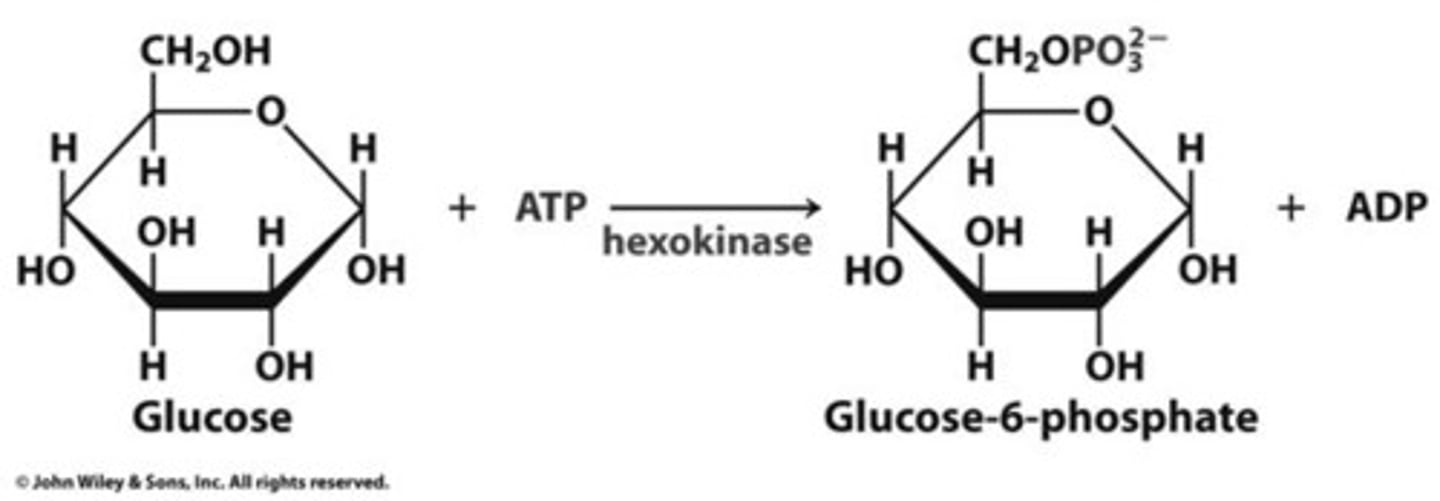
Step 2
Glucose-6-phosphate is converted into its isomer, fructose-6-phosphate.
Enzyme = Phosphoglucose Isomerase
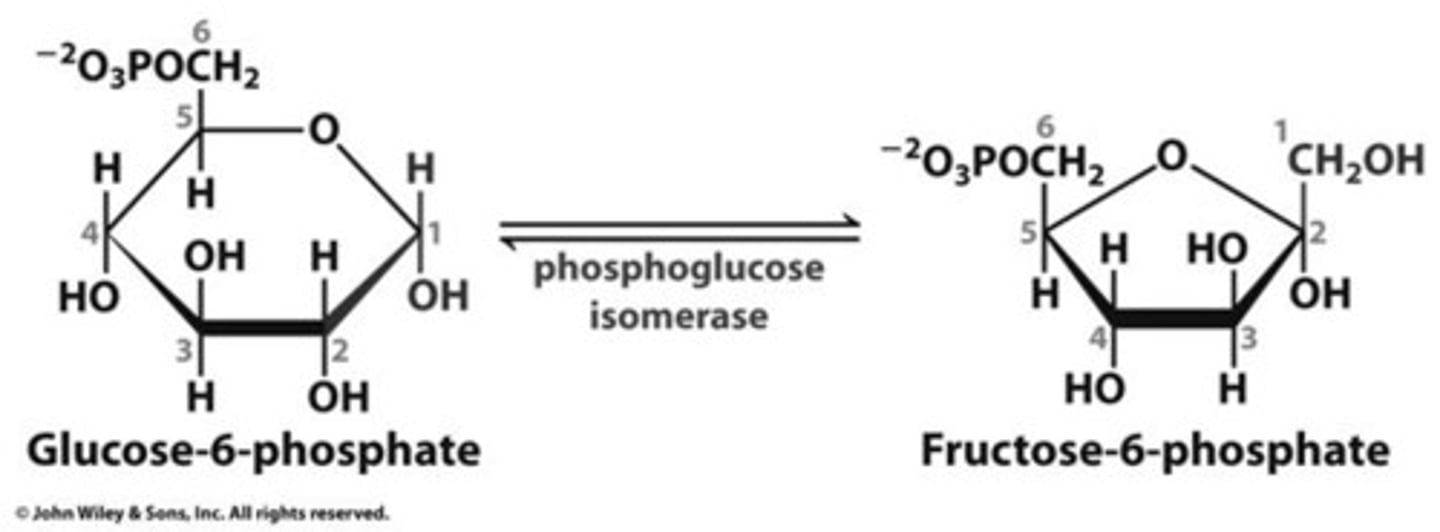
Step 3
A phosphate group is transferred from ATP to fructose-6-phosphate, producing fructose-1,6-bisphosphate. This step is catalyzed by the enzyme phosphofructokinase, which can be regulated to speed up or slow down the glycolysis pathway.
Enzyme = Phosphofructokinase

Step 4
Fructose-1,6-bisphosphate splits to form two three-carbon sugars: dihydroxyacetone phosphate (DHAP) and glyceraldehyde-3-phosphate. They are isomers of each other, but only one—glyceraldehyde-3-phosphate—can directly continue through the next steps of glycolysis.
Enzyme = Fructose Biphosphate Aldolase
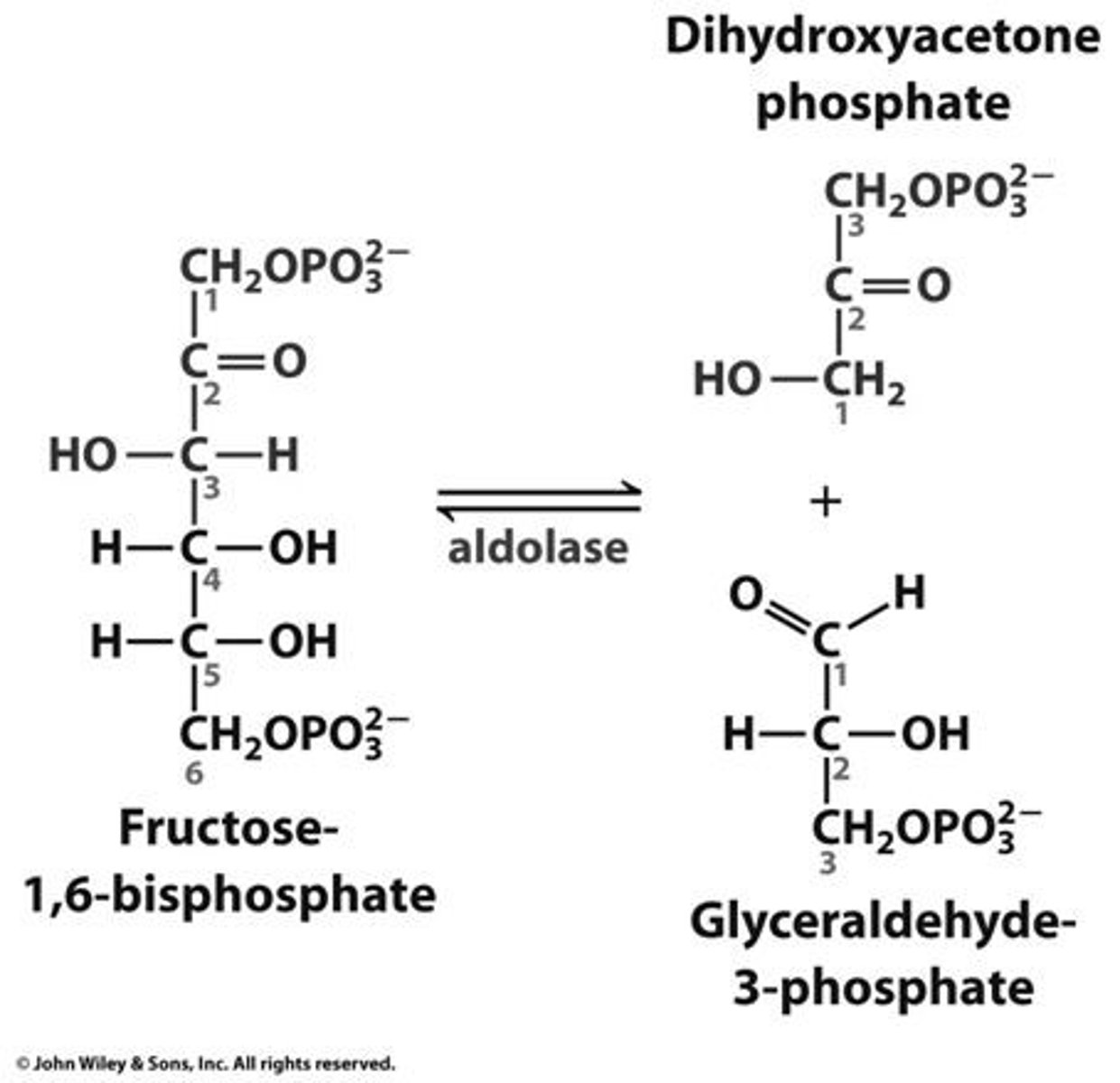
Step 5
DHAP is converted into glyceraldehyde-3-phosphate. The two molecules exist in equilibrium, but the equilibrium is "pulled" strongly downward, in the scheme of the diagram above, as glyceraldehyde-3-phosphate is used up. Thus, all of the DHAP is eventually converted.
Enzyme = Triose Phosphate Isomerase
- This ends the "energy investment phase" of glycolysis. Two ATP molecules have been used up and two 3-carbon molecules that are isomers of each other (DHAP and G3P) have been produced.
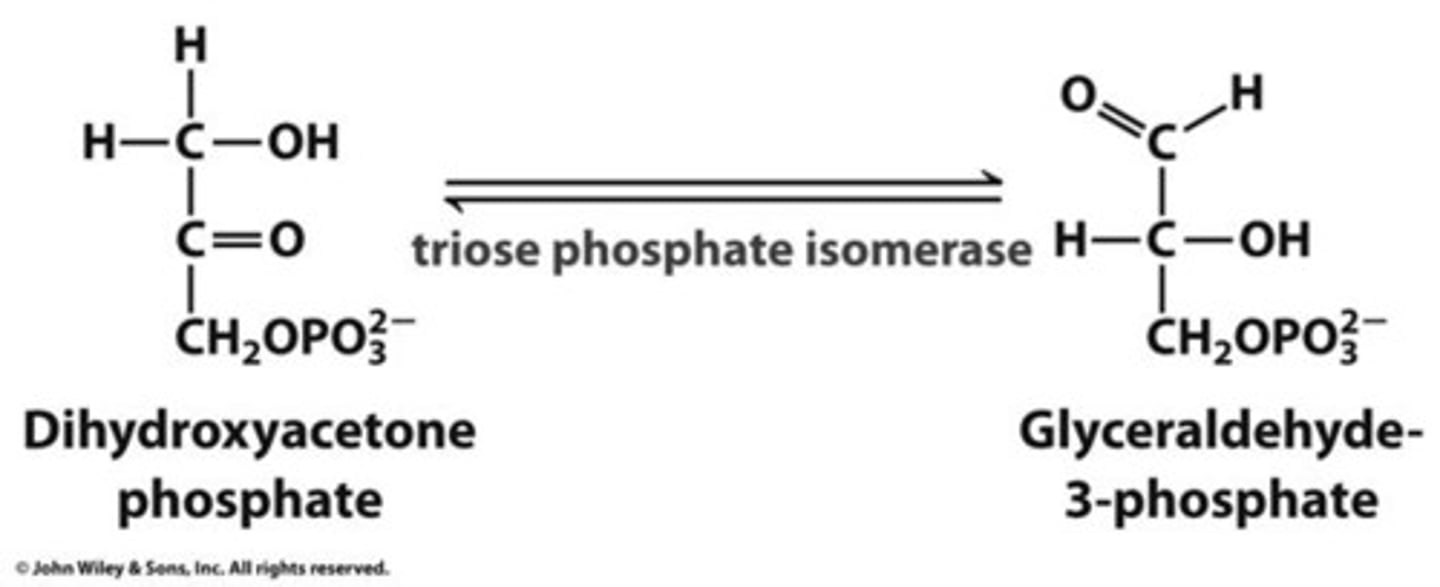
Step 6
Glyceraldehyde-3-phosphate, one of the three-carbon sugars formed in the initial phase, loses two electrons and two protons, reducing NAD+ to NADH and producing an H+.This reaction releases energy, which is used to attach another phosphate to the sugar, forming 1,3-bisphosphoglycerate.
Enzyme = Glyceraldehyde-3-Phosphate Dehydrogenase

Step 7
1,3-bisphosphoglycerate donates one of its phosphate groups to ADP, making a molecule of ATP and turning into 3-phosphoglycerate in the process. This is the first substrate-level phosphorylation.
Enzyme = Phosphoglycerate Kinase

Step 8
3-phosphoglycerate is converted into its isomer, 2-phosphoglycerate.
Enzyme = Phosphoglycerate Mutase
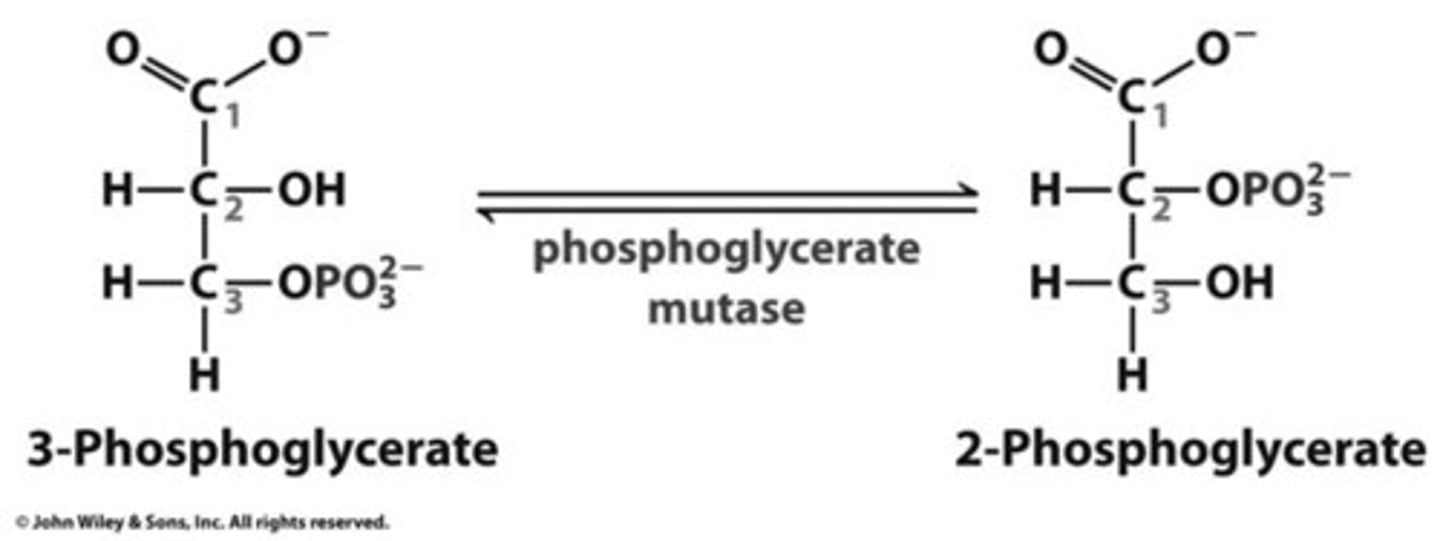
Step 9
2-phosphoglycerate loses a molecule of water, becoming phosphoenolpyruvate (PEP). PEP is an unstable molecule, poised to lose its phosphate group in the final step of glycolysis.
Enzyme = Enolase
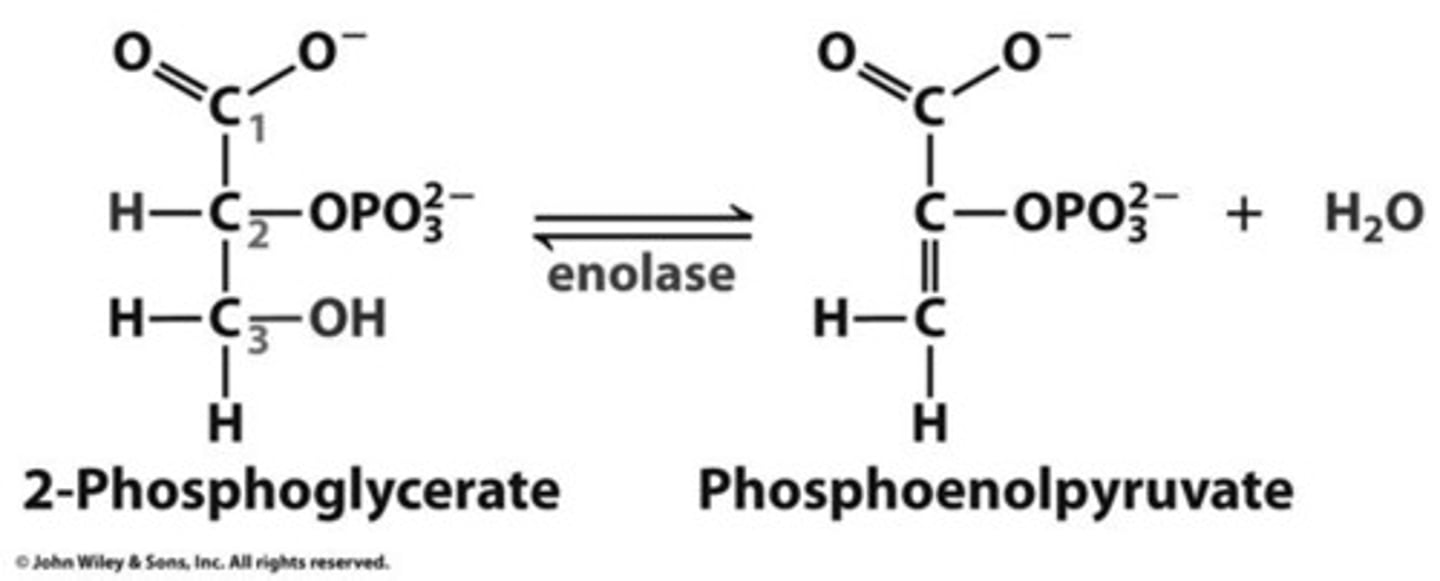
Step 10
PEP readily donates its phosphate group to ADP, making a second molecule of ATP. As it loses its phosphate, PEP is converted to pyruvate, the end product of glycolysis.
Enzyme = Pyruvate Kinase
- This ends the "payoff phase" of glycolysis. 2 ATP and 1 NADH are produced from each of the 3-carbon sugars (Glyceraldehyde-3-phosphate), leading to the formation of 2 pyruvate molecules, 4 ATP, and 2 NADH.
- The "net" production is 2 ATP molecules!

TERM
Regulatory Step #1
DEFINITION
This is the first irreversible step of glycolysis. It is highly exergonic.
TERM
Regulatory Step #2
DEFINITION
This is the second irreversible step of glycolysis. It is highly exergonic. PFK is an allosteric enzyme regulated by the energy status of the cell.
TERM
Regulatory Step #3
DEFINITION
This is the third (and final) irreversible step of glycolysis. It is highly exergonic.